-
 Bitcoin
Bitcoin $118300
-1.72% -
 Ethereum
Ethereum $3591
-0.69% -
 XRP
XRP $3.478
-3.53% -
 Tether USDt
Tether USDt $1.001
-0.01% -
 BNB
BNB $737.7
-0.54% -
 Solana
Solana $177.3
-2.40% -
 USDC
USDC $0.9999
-0.01% -
 Dogecoin
Dogecoin $0.2538
7.04% -
 TRON
TRON $0.3256
-0.85% -
 Cardano
Cardano $0.8332
-3.48% -
 Hyperliquid
Hyperliquid $44.80
-3.30% -
 Stellar
Stellar $0.4672
-6.09% -
 Sui
Sui $3.828
-5.98% -
 Chainlink
Chainlink $18.15
-3.41% -
 Hedera
Hedera $0.2655
-7.16% -
 Bitcoin Cash
Bitcoin Cash $517.5
-0.64% -
 Avalanche
Avalanche $23.89
-2.37% -
 Shiba Inu
Shiba Inu $0.00001519
-0.45% -
 UNUS SED LEO
UNUS SED LEO $8.973
0.13% -
 Toncoin
Toncoin $3.211
-2.54% -
 Litecoin
Litecoin $103.5
-3.58% -
 Polkadot
Polkadot $4.313
-3.90% -
 Uniswap
Uniswap $10.31
0.67% -
 Monero
Monero $325.4
-2.88% -
 Bitget Token
Bitget Token $5.049
3.51% -
 Ethena USDe
Ethena USDe $1.002
0.04% -
 Pepe
Pepe $0.00001346
-2.96% -
 Dai
Dai $0.9999
-0.02% -
 Aave
Aave $322.1
-2.93% -
 Bittensor
Bittensor $411.9
-4.70%
How to build a DeFi strategy with LSTs
LSTs enable users to earn staking rewards while maintaining liquidity, allowing their assets to be used across DeFi for yield farming, lending, and more.
Jul 19, 2025 at 07:07 pm
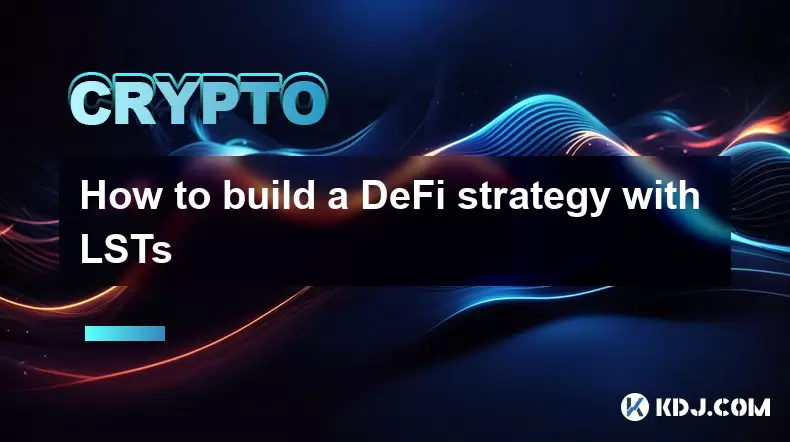
Understanding LSTs and Their Role in DeFi
LSTs, or Liquid Staking Tokens, are derivative tokens that represent staked assets on a proof-of-stake (PoS) blockchain. When users stake their native tokens (e.g., ETH on Ethereum), they typically lock up their assets and lose liquidity. LSTs solve this issue by allowing users to receive a tokenized version of their staked asset, which can be freely traded or used in DeFi protocols. This innovation has unlocked new opportunities for yield generation and capital efficiency in decentralized finance.
LSTs are commonly issued by liquid staking platforms such as Lido, Rocket Pool, and Stakewise. These platforms allow users to deposit their tokens, stake them on their behalf, and issue a corresponding LST in return. For example, staking ETH on Lido yields stETH, which represents the staked ETH plus accrued staking rewards.
Understanding how LSTs function is essential for building a DeFi strategy. They enable users to maintain exposure to staking rewards while simultaneously participating in other DeFi activities such as lending, borrowing, and liquidity provision.
Choosing the Right LST for Your Strategy
Not all LSTs are created equal, and selecting the appropriate one is crucial for your DeFi strategy. Key factors include the underlying blockchain, the reputation of the staking provider, and the liquidity of the LST in decentralized exchanges (DEXs).
- Underlying asset and chain: Most LSTs are based on major PoS chains like Ethereum, Cosmos, or Solana. The health and adoption of the chain directly affect the value and utility of the LST.
- Provider trustworthiness: Platforms like Lido and Rocket Pool have strong track records and transparent governance. It's essential to research the provider’s security and decentralization level before depositing funds.
- Trading volume and liquidity: A liquid LST ensures easy entry and exit from positions. Check DEXs like Curve, Balancer, or Uniswap for trading pairs and liquidity depth.
By selecting a high-quality LST, you reduce counterparty and liquidity risks, which is foundational for any DeFi strategy involving these assets.
Integrating LSTs into Yield Farming Strategies
One of the most popular ways to build a DeFi strategy with LSTs is through yield farming. By depositing LSTs into liquidity pools or lending protocols, users can earn additional rewards in the form of fees or governance tokens.
For example, stETH can be deposited into a Curve Finance pool to provide liquidity alongside stablecoins like DAI or USDC. In return, the user earns trading fees and CRV tokens as incentives. This process can be further enhanced by using yield aggregators like Yearn Finance or Beefy Finance, which automatically compound rewards and optimize returns.
Here’s a simplified breakdown of steps to yield farm with LSTs:
- Deposit your native token (e.g., ETH) into a liquid staking platform.
- Receive the corresponding LST (e.g., stETH).
- Navigate to a DEX like Curve or Balancer and find a pool that accepts the LST.
- Add liquidity by pairing the LST with a stablecoin or another compatible token.
- Earn fees and reward tokens from the pool, which can be reinvested or withdrawn as needed.
Users should be aware of impermanent loss (IL) and smart contract risks when providing liquidity. Always assess the risk-reward ratio before committing funds.
Leveraging LSTs in Lending and Borrowing Protocols
Another powerful use case for LSTs is in lending and borrowing platforms like Aave or MakerDAO. These protocols accept LSTs as collateral, allowing users to borrow stablecoins or other assets while still earning staking rewards on their deposited LSTs.
For instance, a user can deposit stETH into Aave as collateral and borrow DAI against it. The stETH continues to appreciate in value due to staking rewards, while the borrowed DAI can be used for other purposes like reinvesting, trading, or paying off debts.
- Check collateral factors: Not all LSTs are accepted as collateral, and those that are may have different loan-to-value (LTV) ratios.
- Monitor liquidation thresholds: If the value of the LST drops significantly, the position may be at risk of liquidation.
- Use stop-loss tools or automation: Platforms like Instadapp or DeFi Saver can help automate repayments or liquidation prevention.
This strategy can be particularly effective in a rising market, where the LST appreciates while the borrowed asset remains stable or is used to generate additional income elsewhere.
Combining LSTs with Other DeFi Strategies
Advanced DeFi strategies often involve combining LSTs with other tools and protocols to maximize returns. This includes using LSTs in yield aggregators, structured products, and cross-chain opportunities.
- Yield aggregators: Platforms like Yearn or Harvest automatically move funds between protocols to capture the best yield. Staking LSTs in these vaults can simplify the process and enhance returns.
- Structured products: Some protocols offer structured strategies like fixed-rate staking or options-based products using LSTs as underlying assets.
- Cross-chain opportunities: Bridging LSTs to other chains (e.g., stETH to Polygon or Arbitrum) can unlock additional yield opportunities in ecosystems with fewer participants.
Combining these approaches can significantly boost capital efficiency and diversify risk across different protocols and chains. However, it also increases exposure to multiple smart contract risks and requires a more active management approach.
Frequently Asked Questions (FAQ)
Q: Can I unstake my LST anytime?
A: Yes, most platforms allow users to redeem their LSTs for the underlying asset, although this may take time depending on network conditions and protocol mechanics. Some platforms offer instant unstaking for a fee.
Q: Are LSTs subject to slashing?
A: Yes, if the validator backing the staked asset is penalized for misbehavior, the value of the LST may decrease. However, reputable staking providers often have insurance or mechanisms to absorb minor slashing events.
Q: How do I track the value of my LST over time?
A: Most LSTs have a changing exchange rate that reflects accrued staking rewards. Wallets like MetaMask or platforms like Dune Analytics can help track the growth in value of your LST holdings.
Q: Can I use LSTs in centralized finance (CeFi) platforms?
A: Some CeFi platforms accept LSTs for staking or lending, but adoption is still limited compared to DeFi. Always verify whether the platform supports the specific LST you're using.
Disclaimer:info@kdj.com
The information provided is not trading advice. kdj.com does not assume any responsibility for any investments made based on the information provided in this article. Cryptocurrencies are highly volatile and it is highly recommended that you invest with caution after thorough research!
If you believe that the content used on this website infringes your copyright, please contact us immediately (info@kdj.com) and we will delete it promptly.
- XRP Mining for Passive Wealth: Is It the 2025 Crypto Gold Rush?
- 2025-07-19 22:50:12
- Aptos Price Analysis: Bullish Momentum Building?
- 2025-07-19 23:30:12
- Bitcoin, XRP, XYZVerse: Crypto's Highs, Community Dreams, and Meme Coin Mania
- 2025-07-19 23:30:12
- India's Wealthy Embrace Crypto: A New Era of Digital Investment
- 2025-07-19 22:30:12
- XRPL's TVL Surge: DeXRP's Ambitious DEX and SUI's Rise
- 2025-07-19 22:50:12
- ARB Price Rally: Breaking Free from the Descending Channel
- 2025-07-19 23:50:12
Related knowledge
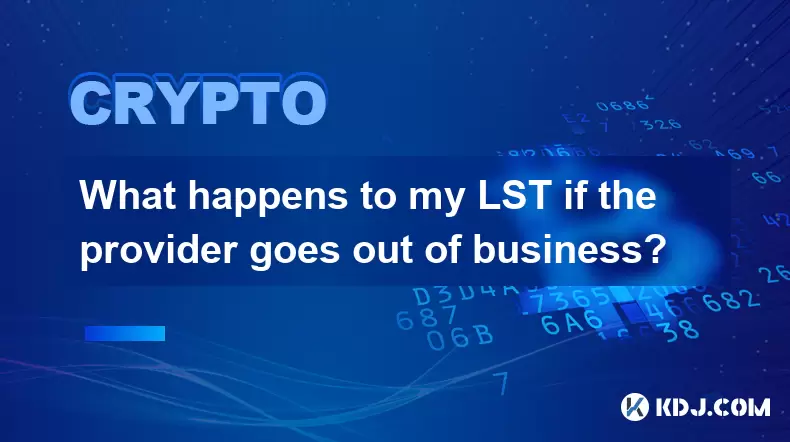
What happens to my LST if the provider goes out of business?
Jul 19,2025 at 10:21pm
Understanding LST and Its Dependence on ProvidersWhen you stake your Ethereum (ETH) through a Liquid Staking Token (LST) provider, you receive a token...

Are there insurance options for liquid staking?
Jul 19,2025 at 06:08pm
Understanding Liquid Staking and Its RisksLiquid staking is a process where users stake their cryptocurrency assets to participate in network validati...

How to build a DeFi strategy with LSTs
Jul 19,2025 at 07:07pm
Understanding LSTs and Their Role in DeFiLSTs, or Liquid Staking Tokens, are derivative tokens that represent staked assets on a proof-of-stake (PoS) ...
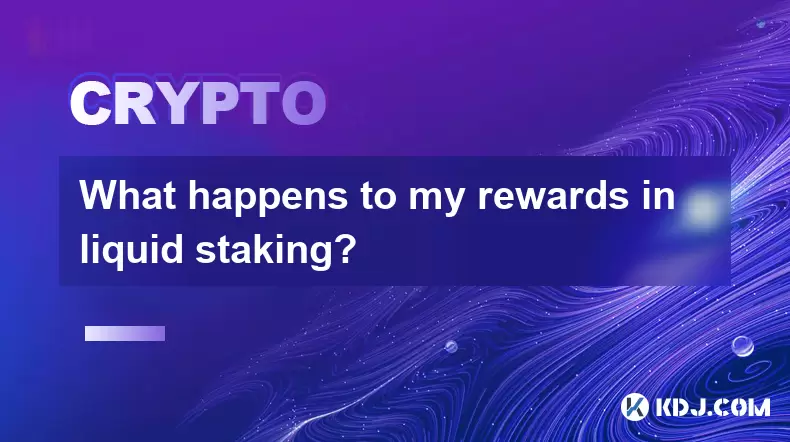
What happens to my rewards in liquid staking?
Jul 19,2025 at 12:21pm
Understanding Liquid Staking and Its MechanicsLiquid staking is a mechanism in the cryptocurrency ecosystem that allows users to stake their tokens wh...
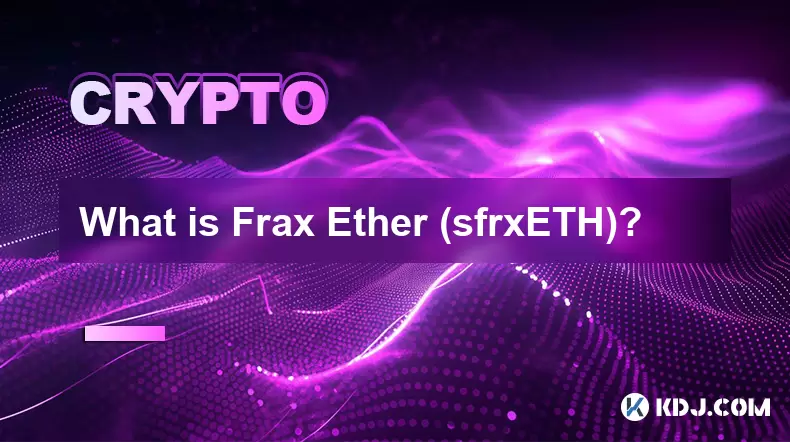
What is Frax Ether (sfrxETH)?
Jul 19,2025 at 10:08am
Understanding Frax Ether (sfrxETH)Frax Ether (sfrxETH) is a derivative token within the Frax Finance ecosystem, which is a decentralized finance (DeFi...
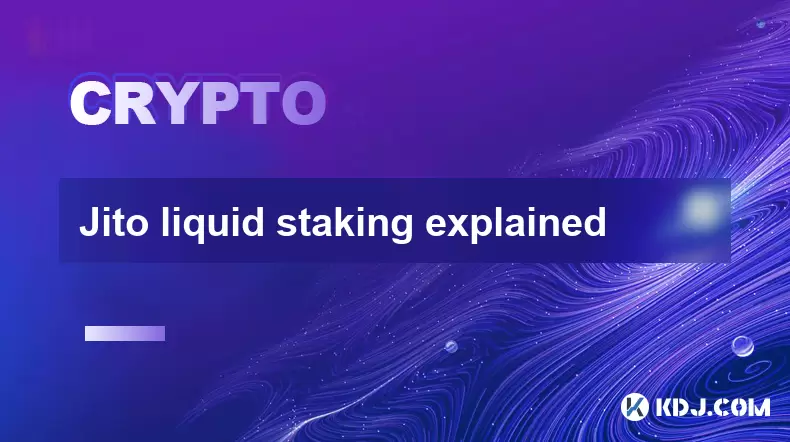
Jito liquid staking explained
Jul 19,2025 at 08:08pm
What Is Jito Liquid Staking?Jito liquid staking is a decentralized staking solution that allows users to stake their assets while maintaining liquidit...

What happens to my LST if the provider goes out of business?
Jul 19,2025 at 10:21pm
Understanding LST and Its Dependence on ProvidersWhen you stake your Ethereum (ETH) through a Liquid Staking Token (LST) provider, you receive a token...

Are there insurance options for liquid staking?
Jul 19,2025 at 06:08pm
Understanding Liquid Staking and Its RisksLiquid staking is a process where users stake their cryptocurrency assets to participate in network validati...

How to build a DeFi strategy with LSTs
Jul 19,2025 at 07:07pm
Understanding LSTs and Their Role in DeFiLSTs, or Liquid Staking Tokens, are derivative tokens that represent staked assets on a proof-of-stake (PoS) ...

What happens to my rewards in liquid staking?
Jul 19,2025 at 12:21pm
Understanding Liquid Staking and Its MechanicsLiquid staking is a mechanism in the cryptocurrency ecosystem that allows users to stake their tokens wh...

What is Frax Ether (sfrxETH)?
Jul 19,2025 at 10:08am
Understanding Frax Ether (sfrxETH)Frax Ether (sfrxETH) is a derivative token within the Frax Finance ecosystem, which is a decentralized finance (DeFi...

Jito liquid staking explained
Jul 19,2025 at 08:08pm
What Is Jito Liquid Staking?Jito liquid staking is a decentralized staking solution that allows users to stake their assets while maintaining liquidit...
See all articles

























































































